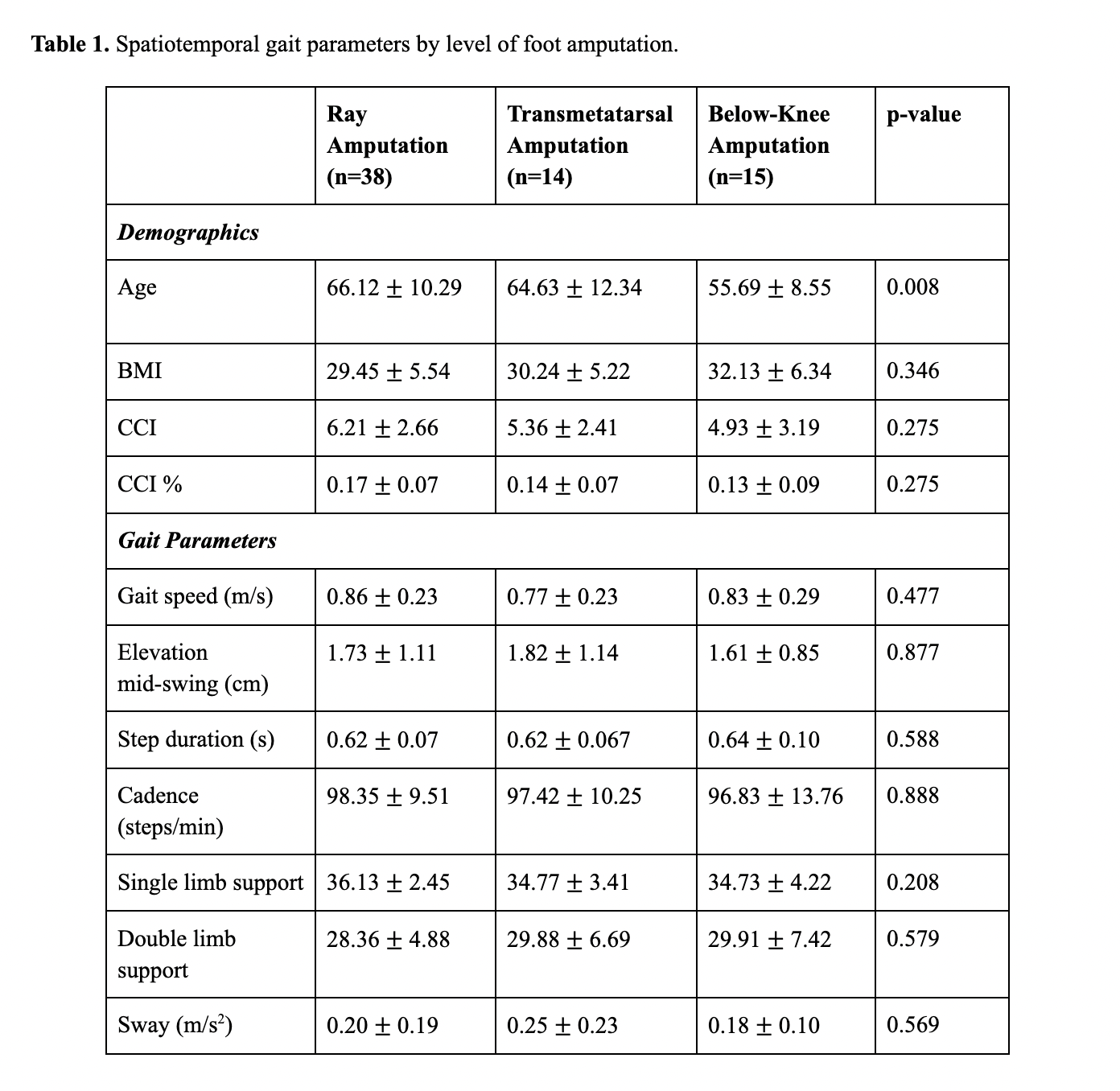OBJECTIVES:The surgical decision for limb salvage with ray amputation (RA), transmetatarsal amputation (TMA), and below-knee amputation (BKA) for complex lower extremity (LE) wound hinges on several factors, including patient choice and ambulatory function. Several studies assessing postoperative outcomes following limb salvage for chronic LE wounds. However, gait as a measure of functionality to compare levels of amputation remains understudied. We aim to compare functional outcomes of partial RA, TMA, and BKA patients through gait analysis.
METHODS:Between December 2021 to -July 2023, patients aged 18 years or older, who could safely ambulate unassisted without pain, open wounds, or LE surgery within past three months were invited to participate. Patients with partial RA, TMA, or BKA were included in analysis. Patient demographics, comorbidities, preoperative characteristics, and amputation details were collected. Levels of amputation were verified through radiographic review. Participants completed a standardized gait analysis protocol with wearable sensors, completing a 120-second walk test at a self-selected pace and a 30-second Romberg (sway) test. Data was collected via Motility Lab software. Data was analyzed utilizing ANOVA, significance defined as p<0.05.
RESULTS:Of the 368 patients in the gait database, 67 received a qualifying amputation: RA (n=38, 56.7%), TMA (n=14, 20.9%), and BKA (n=15, 22.4%). BKA patients were younger than RA and TMA patients (55.78.6 vs. 66.110.3 vs. 64.612.3 years; p=0.008), but had comparable BMIs and CCIs. There were no differences in gait parameters across all amputation levels, including gait speed, elevation mid-swing, step duration, cadence, single and double limb support, and sway. However, gait parameters were worse across all cohorts compared to normal values reported in existing literature.
CONCLUSIONS:
To the authors’ knowledge, this is the first study to use gait as a measure of functionality to compare levels of amputation. Despite the perception of altered gait mechanics in patients undergoing RA, TMA, or BKA, we found no significant differences in gait disturbances between these groups. These findings could represent patient-centered functionally based surgical management for limb salvage using interdisciplinary care, preoperative medical optimization, and proper patient selection. Further studies with a greater number of patients are crucial for comparing limb salvage interventions. 